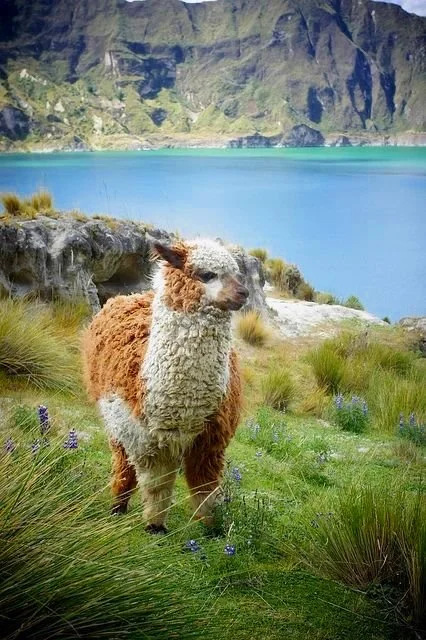
Picnic in Quilotoa crater lake.
How to reach it?
Quilotoa Lake is located in central Ecuador, 3 hours - 180 km from the capital Quito.
To get from Quito to Quilotoa by public transport, you’ll need to first go to the Quitumbe bus terminal, located in the south of Quito. To get to the terminal, you can take an Uber (depending on the time of day, this can cost between $10-20 dollars).
DIRECT BUS FROM QUITO TO QUILOTOA
The only bus company in Quitumbe that drives directly to Quito is “La Illinizas”. The trip takes 3 hours. It leaves at 5:00 PM every day, for about $3.
CHANGING BUS VIA LATACUNGA
Buses leave from the Quitumbe station in Quito to Latacunga every 10 minutes and cost $2.50. The trip takes 1 hour (without traffic). Once in Latacunga, you can take a bus to Quilotoa, which takes 2 hours and costs $2. The buses only leave a few times a day, starting from 9:30 AM. If you’re only planning on visiting Quilotoa for the day, make sure to ask the bus driver when the last bus leaves from Quilotoa, likely around 3 PM.
Hike around Quilotoa.
Quilotoa is the westernmost volcano within the Ecuadorian Andes. It’s known for its stunning panorama and turquoise-tinted lake. The crater lake is 250 meters deep, and its distinct colouring comes from the dissolved volcanic minerals remaining from its past eruptions (800 years ago).
The best way to enjoy the incredible lake view and the surrounding landscape is to hike around the rim of the crater. This is a relatively easy hike, though there are a few narrow spots, and takes about 6-8 hours to complete, depending on your level of fitness and pace. On the way you will also find some alpacas, wandering around.
Picnic overlooking the crater.
If you don’t feel like hiking, you don’t need to do the whole circular trail. Take some food with you, sit on the grass, and enjoy the beautiful view. You will see the colours of the lake changing — from green to turquoise, depending on the position of the clouds.
If you want to taste some local dishes, there are different restaurants at the beginning of the trail.



